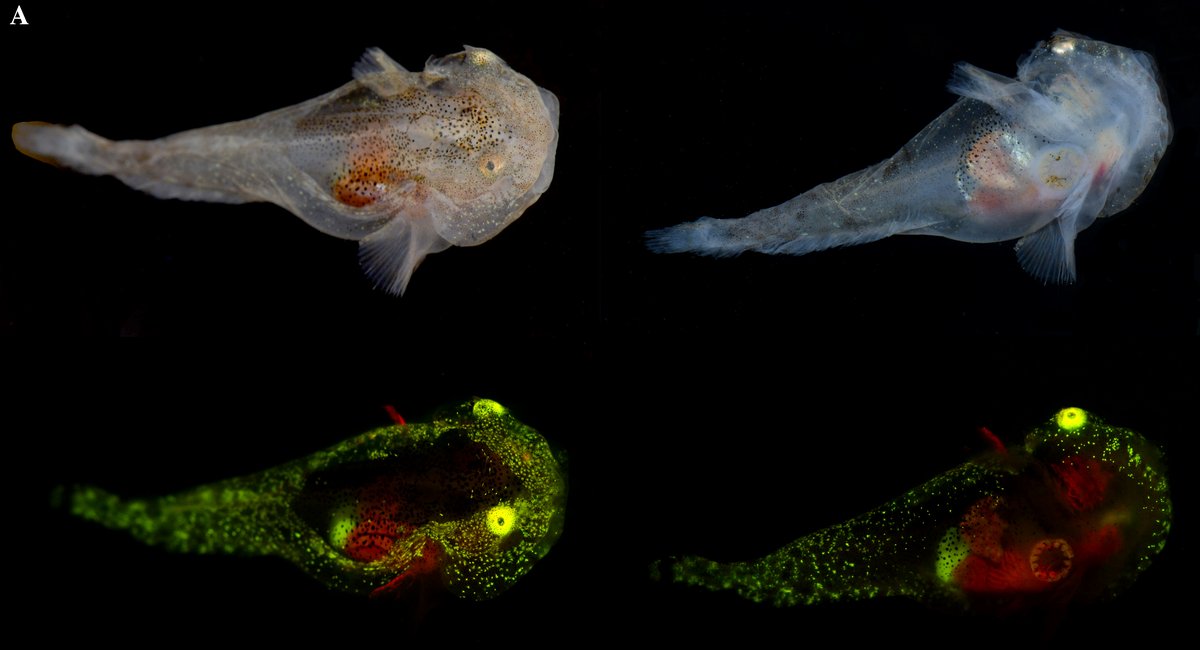For 50 years, scientists have known that some Arctic and Antarctic fish survive the ultracold depths by producing “antifreeze” proteins in their bodies to protect against the subzero temperatures. Now, a team based at CUNY and the American Museum of Natural History have discovered a species that tops them all — the coldest of the cold-dwellers.
While looking for bioluminescent “glowing animals” off Greenland’s coast, AMNH marine biologist Dr. David Gruber revealed a species of snailfish with the highest levels of this antifreeze protein ever discovered in polar and subpolar marine creatures.
Called Liparis gibbus or the variegated snailfish, these tadpole-shaped creatures have the genetic ability to create a gel-like substance to keep themselves from turning into frozen fish in temperatures that are 29 degrees Fahrenheit, just above the freezing point for salty ocean water (28.4 degrees Fahrenheit) — but just below typical freezing point for fish blood (30.4 degrees Fahrenheit).
It’s a surprising discovery that helps explain why this rare fish can survive in such inhospitable conditions. But scientists warn that as they learn more about the incredible evolutionary traits of these iceberg-dwelling fish, time is not on their side.
These tiny creatures are also likely among the planet’s most threatened by climate change because the traits that allow them a monopoly on iceberg food sources may soon be unnecessary as the Arctic warms and other animals are able to move in to take advantage.”
The researchers found the tiny snailfish, barely the size of a fingertip, living in iceberg crevices. Gruber and Dr. John Sparks, an AMNH curator and principal investigator, detail the genetic discovery in a study released Tuesday in the journal “Evolutionary Bioinformatics.”
“We were diving both day and night under the ice, and it felt like diving in molasses,” said Gruber, a biology and environmental sciences professor at CUNY’s Baruch College. “The fish were really slow and sluggish living in such a cold environment, and it was just amazing how this fish is surviving in this extreme environment and not freezing.”
Found both among icebergs and in the greatest ocean depths, these swimmers produce an internal gel that allows them to live in the coldest waters. The gel’s antifreeze protein stops the internal creation of large ice crystals that would otherwise kill the animal. Fish are incapable of surviving even partial freezing of their body fluids, according to Gruber.
“The snailfish swims in this beautiful, gentle, and undulating way,” said Dr. Michael Tessler, a biology professor at St. Francis College who was not involved in the study.
Researchers sequenced the snailfish’s DNA in a lab to discover all the proteins the animal produces. The antifreeze protein was in the highest abundance.
“If you’re making a lot of muscle tissue, it’s because you’re using the muscles a lot,” said Gruber. “It takes effort to make certain types of proteins, and by making a lot of it, it just shows that this is something that this fish is investing heavily in.”
Swimming among the icebergs, Gruber also observed a lot less biodiversity than he expected in the Arctic waters. According to the study, only 270 or so fish species live in those chilly waters — and of those, 15 varieties live there and nowhere else in the world.
But the snailfish’s situation could soon change for the worse — due to climate change.
A separate study published earlier this month revealed that Arctic icebergs are melting four times faster than previously assumed.
“You could just feel the rate at how quickly they’re [icebergs] melting, and you could just hear the cracking and melting – the sounds were haunting,” Gruber said.
This trend could result in the northward migration of other fish from temperate waters — species that normally would not be able to survive in the Arctic. Variegated snailfish could lose their tenuous monopoly on food sources in the region.
“Once the icebergs are gone and the water’s warm, more fierce competitors will come in and will likely outcompete this fish,” Gruber said.
The variegated snailfish can also be found in the Marianas Trench, one of the greatest depths on Earth at nearly 7 miles — deep enough to fit Mount Everest with 7,000 feet to spare. Gruber conjectures that there could be a connection between the antifreeze proteins’ ability to keep the iceberg snailfish from freezing and the ability of the same fish to live under great pressure deep in the ocean. This is potentially critical to the existence of this animal.
“The warmer you get, the less you get these unique adaptations that took millions of years to make,” Tessler said. “I’m worried about unique species like this and places like the poles using their distinctiveness.”
